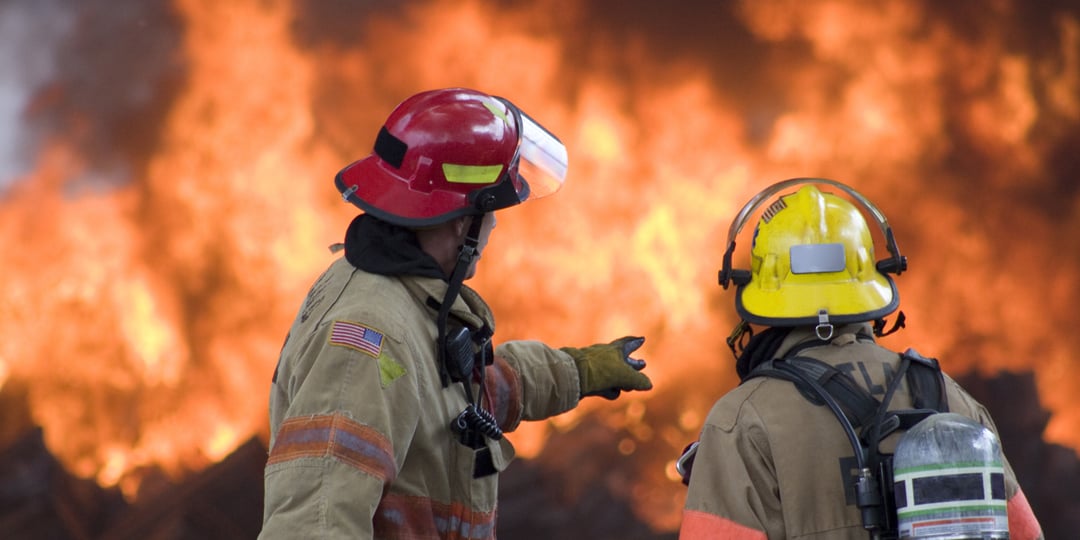If you’ve been watching the news over the last few years, you’ve probably noticed an uptick in reports of wildland fires around the world. From California to Australia, Canada to Europe, and beyond; as wildfires increase, so too do the risks to the firefighters called on to fight them.
That’s why it’s more important than ever for fire departments to be equipped with the latest wildland fire gear ready to go, call after call. So how can you ensure that your department’s gear is up to date and providing the best protection available?
First, let’s discuss what makes wildland fire gear different from other firefighting garments.
Different Garments for Different Calls
Firefighters get called out to a wider variety of scenes than people may realize. So when most people think of firefighter suits, they usually think of the iconic firefighter turnout gear, with high pants held up by suspenders, big overcoats, and multiple thick, heavy fabric layers. But those are not the same suits used for wildland fires, or many other incidents firefighters are called to.
Turnout gear is for structural fires, and it’s one of the most complex pieces of personal protective equipment in the world. It does an exceptional job protecting firefighters who must enter hazardous burning buildings, but it’s too heavy of a garment to be worn for long periods. In fact, firefighters are trained to take breaks while fighting structural fires, removing their turnout gear to avoid heat exhaustion.
A wildland fire is just as dangerous as a structural fire but requires a different approach. Firefighters may be actively fighting a wildland fire for 10 to 12 hours or more without breaks. Heavy turnout gear is not well-suited to such an environment. Instead, firefighters at wildland fires need garments that will not only provide adequate heat protection and flame resistance but will also keep them cool and comfortable enough to be worn continuously for hours on end.
Enter wildland fire gear: a single-layer suit typically manufactured with more comfortable, lighter-weight fabrics that meet protective standards for heat and flame resistance and durability standards for resisting snags or tears and holding up to frequent laundering.
Since turnout gear is so specifically engineered for the main purpose of fighting structural fires, wildland fire gear can often stand in for other applications beyond wildland fires. For that reason, many fire departments rely on their wildland fire gear to be highly versatile. At minimum, wildfire gear must have the following aspects:
- Strong, durable materials
- Breathable and light enough to be worn for long periods
- Compliant with the most recent relevant safety standards
- Flame-resistant
How to Make Sure Your Wildland Gear Is Up to Date
Wildland fire gear lifecycles can vary widely depending on how frequently the gear gets used. Some departments get called out to 50 to 100 fires in a year, while others may only get a few calls per year. The more you use it, the sooner you need to replace it, but generally the lifespan of a wildland fire garment falls between two and five years.
So the first question to ask when you’re assessing your wildland fire gear readiness is: How old is this gear?
If it’s been over five years since you put it in service, it’s time to get a fresh batch. If it’s been under five years, but the gear looks faded, has stains or tears, or you know it’s been used on a lot of calls, it’s also probably time to order new gear.
If your wildland fire gear is relatively new, then you want to be sure that it is compliant with the most recent safety standards that govern firefighting garments in your area. In the Americas, that’s usually the National Fire Protection Association (NFPA), and elsewhere in the world, it’s often the International Organization for Standardization (ISO).
Although their testing methods and measurements may differ, the NFPA and ISO share the same goals and cover aspects such as durability and heat resistance in the standards they publish and maintain. NFPA 1977 is the Standard on Protective Clothing and Equipment for Wildland Fire Fighting, and ISO 16073 lays out the ISO’s requirements and test methods for wildland firefighting personal protective equipment. It’s a smart practice to regularly check your relevant organization for standards updates so that you’re always aware when something changes that may affect the use of your gear.
When it is time to purchase new wildland fire gear, it’s a great time to learn about any new and advanced products that may have hit the market since your current gear was manufactured. Fabric and garment makers are continually innovating safer, more comfortable options to meet market trends and end-user demands. Recently, we’ve seen departments around the world shifting from treated cotton blends to inherent FR blends, which can offer greater protection in lighter weight and more comfortable fabrics.
By tracking your current garments’ lifecycles, keeping up to date with NFPA/ISO standards, and staying abreast of industry developments, you will set your department up well to have the latest wildland fire gear at the ready.
Higher Quality and Dual Certifications = Longer-Term Value
To get the most value out of your wildland fire gear, it’s worth investing more on the front end in higher-quality, more durable products than less expensive options with shorter garment lifespans. Another way that departments lower costs is by purchasing dual-certified garments, such as stationwear that is rated for wildland firefighting, or wildland fire gear that can be used for technical rescue applications. Fire and Rescue New South Wales in Australia, one of the largest fire departments in the world, utilizes a pant that serves both as stationwear and as wildland fire gear. The synergy that is possible with dual-certified garments can allow departments to buy fewer items that are appropriate for more applications, saving room in their budget for other necessary investments.









